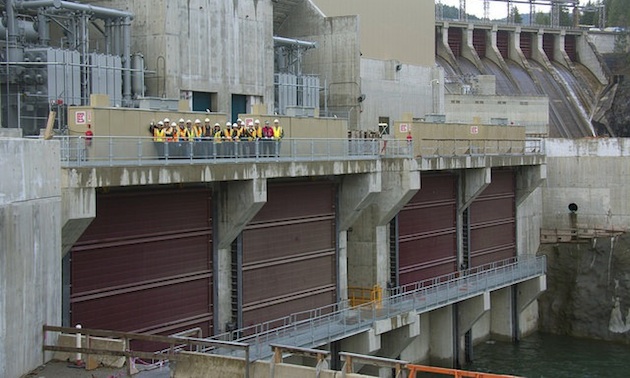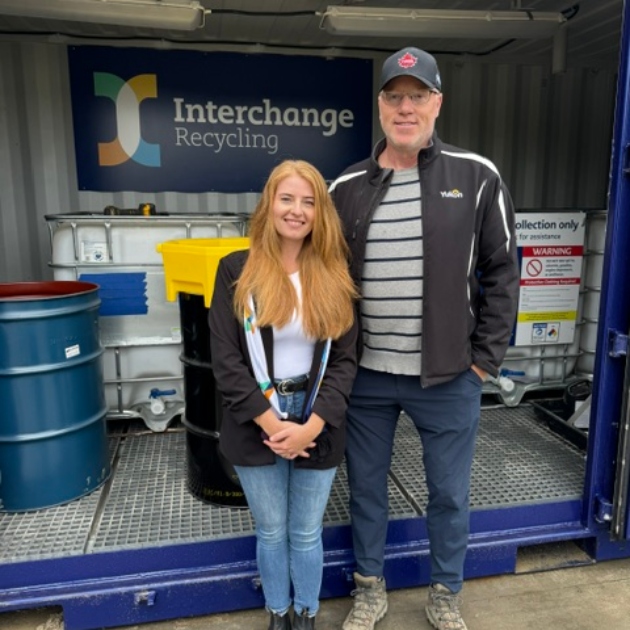Stewarding the sturgeon, snakes and songbirds
The Waneta Dam project protects white sturgeon and other endangered species

Four exclusion gates prevent the endangered sturgeon from entering the powerhouse. — Larry Doell photo
How do you get permits for a large industrial project? Sometimes it means paying attention to the small things, like fish, snakes, birds and plants.
The Waneta Expansion Project sits on the Pend d’Oreille River just upstream from the confluence of the Pend d'Oreille and Columbia rivers. This confluence is critical breeding habitat for the endangered white sturgeon.
In order for the project to get its permits, Columbia Power had to develop a plan to protect the sturgeon, which are a unique freshwater fish that are long-lived and can grow up to six metres. On B.C.’s red list of endangered species, the sturgeon of the Columbia River are a critically imperilled species.
The turbulent waters of the confluence create perfect breeding habitat for the adult white sturgeon, which tend to be found in deeper, faster waters where they spend most of their time on or near the bottom of the riverbed.
Fish gates
One of the subcontractors on the expansion project—ASL-JV in Trail—designed and built white sturgeon exclusion gates.
“We believe the sturgeon exclusion gates are a first in North America and perhaps the world,” said Audrey Repin, spokesperson for the Waneta Expansion Project and the director of stakeholder and external relations for Columbia Power Corporation.
Weighing approximately four tonnes each, the four exclusion gates are lowered into place at the tailrace—where the water leaves the powerhouse—when the facility is offline. This prevents the sturgeon from entering the facility.
All species of fish in the river will benefit from the additional capture of the water that was spilling over the Waneta dam. Much of that excess water will now go through the powerhouse and be used to generate power instead, which also reduces the downstream total gas pressure levels that can be harmful to fish.
The expansion project will provide enough clean energy to power about 60,000 homes per year and will reduce greenhouse gas emissions by 400,000 tonnes, the equivalent of taking 78,000 cars off the road, according to Repin.
Many species protected
Another species of concern at the expansion site is the rubber boa, which resembles a dark green or brown rubbery tube. As with many snakes, they are at risk of death while basking on warm roads. To protect the snakes at the site, speed limits were reduced and signs were installed to remind workers of their presence. After some construction roads were eliminated, the road signs were in high demand.
The yellow-breasted chat, a large colourful songbird, is another threatened species with red-listed status in B.C. These warblers are in danger of becoming extirpated in B.C. because of habitat loss—they prefer dense thickets next to waterways—due to development. The only yellow-breasted chat nesting area in the West Kootenay region has been found in the area of the Waneta Dam transmission line.
Repin is proud that the transmission line right-of-way was cut in an unconventional manner. Instead of removing all the vegetation to the ground and removing the stumps, the shrub layer was retained across its entire length.
“This approach benefits species by leaving much more habitat than the old-school way of doing things,” she said. “Chats and herptiles benefit from this.”
This approach also minimizes the spread of invasive or noxious species of plants.
Nor were rare plants overlooked. Five plants at risk in B.C. have been identified on the site, including western porcupine grass and prairie rocket. About 200 individual plants were originally identified in the area prior to the clearing of the site. Any plants that were at risk of being impacted by construction were relocated in the immediate area. Additional rare plants were propagated off site and then replanted at the dam site, resulting in no net loss, only gains.






Comments